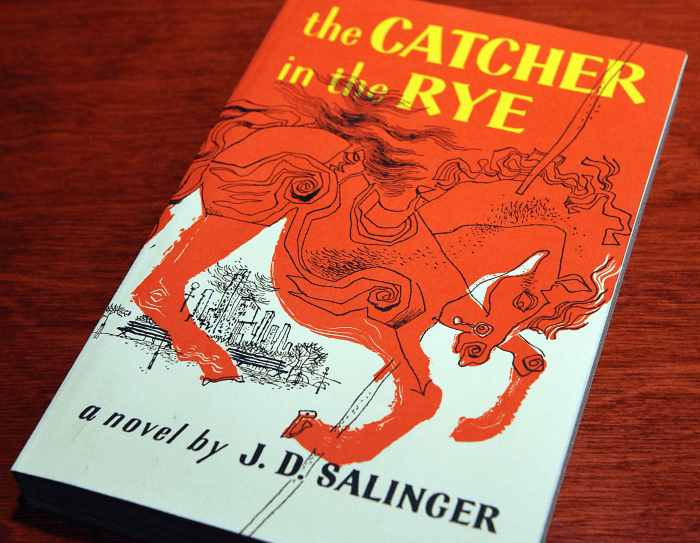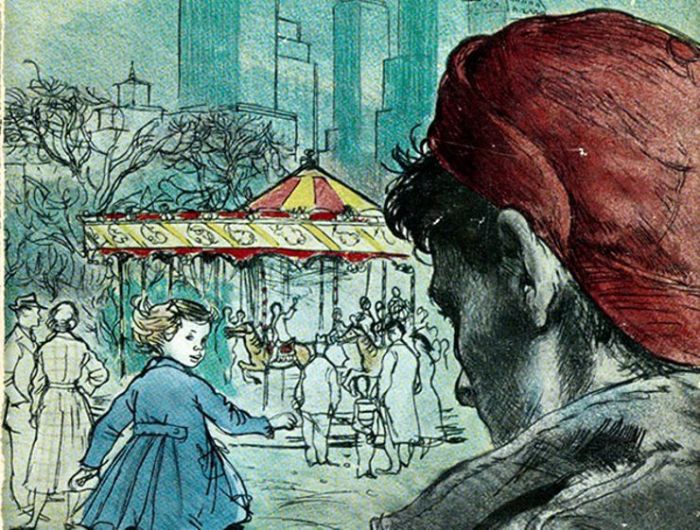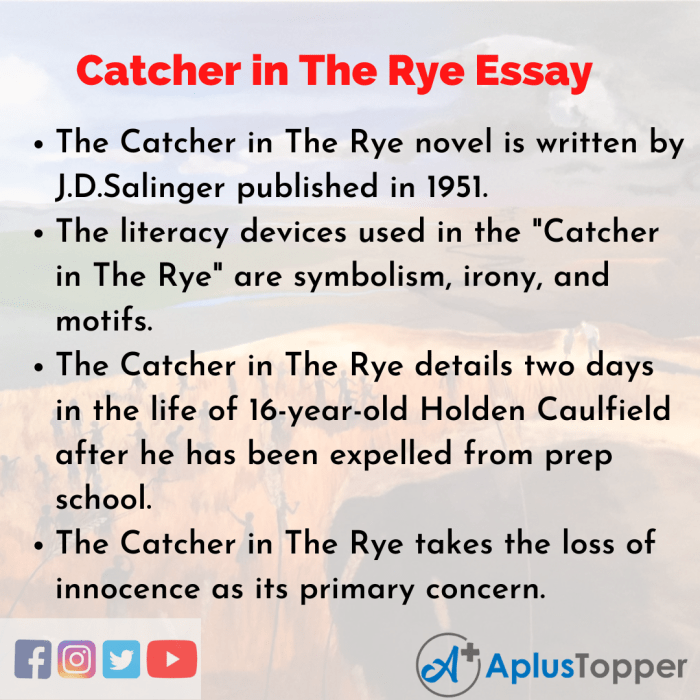Catcher in the rye figurative language – Figurative language plays a crucial role in J.D. Salinger’s “The Catcher in the Rye,” enhancing the novel’s style, imagery, and thematic depth. From symbolism and metaphors to irony and motifs, Salinger employs a rich tapestry of literary devices to convey the complexities of Holden Caulfield’s coming-of-age journey.
This analysis delves into the significance of symbolism, metaphors, irony, imagery, and motifs in “The Catcher in the Rye,” exploring how these literary elements contribute to the novel’s enduring impact and resonance with readers.
Symbolism in “The Catcher in the Rye”

Symbolism is a literary device that uses objects, characters, or events to represent abstract ideas or concepts. In “The Catcher in the Rye,” J.D. Salinger employs symbolism extensively to convey the novel’s themes and character development.
The Rye Field
- Represents innocence and childhood.
- Holden’s desire to “catch” children from falling into the “phoniness” of adulthood.
- A place of safety and refuge for Holden.
The Museum of Natural History, Catcher in the rye figurative language
- Symbolizes Holden’s longing for permanence and stability.
- The dioramas represent a static and idealized world that contrasts with Holden’s chaotic and uncertain reality.
The Red Hunting Hat
- Represents Holden’s individuality and his desire to stand out from the crowd.
- A symbol of rebellion and nonconformity.
The Ducks in Central Park
- Represent Holden’s search for meaning and connection.
- Their migration symbolizes the cyclical nature of life and the inevitability of change.
Metaphors in “The Catcher in the Rye”

Metaphors are literary devices that compare two unlike things without using “like” or “as.” In “The Catcher in the Rye,” Salinger uses metaphors to enhance the novel’s imagery and convey Holden’s unique perspective.
“The phonies”
- A metaphor for the superficial and hypocritical adults that Holden encounters.
- Represents the corruption and artificiality of society.
“The museum”
- A metaphor for Holden’s mind and his desire to preserve his innocence.
- Symbolizes the static and unchanging nature of the past.
“The ducks”
- A metaphor for the innocence and freedom that Holden longs for.
- Represents the cyclical nature of life and the inevitability of change.
Irony in “The Catcher in the Rye”: Catcher In The Rye Figurative Language

Irony is a literary device that creates a discrepancy between what is expected and what actually occurs. In “The Catcher in the Rye,” Salinger uses irony to highlight the contradictions and absurdities of Holden’s world.
Holden’s desire to protect children
- Holden’s desire to “catch” children from falling into the “phoniness” of adulthood is ironic because he is himself immature and vulnerable.
- The children he encounters are often more mature and perceptive than he is.
Holden’s criticism of society
- Holden’s constant criticism of the phoniness of society is ironic because he himself is often guilty of the same behavior.
- He judges others harshly while ignoring his own flaws.
Holden’s search for meaning
- Holden’s search for meaning and connection is ironic because he often isolates himself from others.
- His desire for authenticity leads him to reject the phoniness of society, but he ends up creating his own isolated and artificial world.
FAQ Section
What is the significance of the rye field in “The Catcher in the Rye”?
The rye field symbolizes Holden Caulfield’s desire to preserve innocence and protect children from the corruption of adulthood.
How does Holden Caulfield use metaphors to express his feelings?
Holden frequently uses metaphors to compare himself to animals, such as a duck or a fish, to convey his feelings of isolation and alienation.
What is the purpose of the irony in “The Catcher in the Rye”?
The irony in the novel highlights the gap between Holden’s idealistic view of the world and the harsh realities he encounters.
